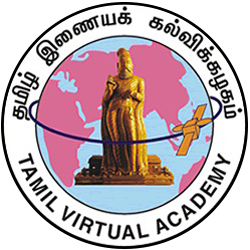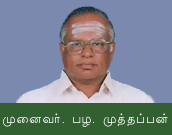Primary tabs
-
p20212 Lesson 2 Bakthi Movement
This lesson discusses the various facets of the bakthi movement in ancient Tamilnadu with special reference to Saivism. The concept of ‘Bakthi’ or devotion to God is very old. In ancient Tamilnadu the notion of ‘bakthi’ first crystallized as a spiritual phenomenon in saivism. This was followed by the appearance of several cults venerating various minor deities. These slowly grew into bakthi movements with distinct rituals and practices.
Saivism which marks the beginning of the bakthi movement in Tamilnadu upholds idol worship. Several texts in the Sangam literature attest to the practice of idol worship in saivism.
Sangam literature also offers a glimpse of the rituals and devotional practices of the ancient Tamils. ‘Agananuru’, ‘Nattrinai’ and ‘Kurunthogai’ refer to ‘Velan Veriyaattu’, a ritual dance associated with the worship of Murugan. There is a mention of the practice of ‘sool’ or swearing by God in ‘Kalithogai’. ‘Thirukkural’ and ‘Pathitrupathu’ speak of sacrificial yagam which were performed to invoke the blessings of the Gods. We learn of ‘nonbu’ or the ritual of fasting from ‘Pathirupathu’, ‘Purananuru’ and ‘Agananuru’.
Since the worship of form is central to saivism, numerous temples consecrating the idol of Shiva were built. Known as ‘Koyil’, ‘Mandram’ or ‘Ambalam’, these became the formal spaces or ‘kalangal’ for the ritualistic expression of bakthi. Sangam literature has several allusions to the ‘kalangal’ devoted to Shiva. The twin epics ‘Silappathigaaram’ and ‘Manimekalai’ refer to shrines dedicated to the minor deities.
The celebration of festivals was deemed as an important aspect of bakthi. ‘Silappathigaaram’ and ‘Manimekalai’ contain descriptions of certain festivals associated with saivism. The former mentions the ‘Kuravai Koothu’, a ritual dance performed to appease the gods. This detail shows that ancient Tamils also celebrated festivals to overcome sufferings caused by the wrath of gods.
Around the 2nd century A.D. several religious faiths flourished in Tamilnadu, each expounding a distinct philosophy. In ‘Manimekalai’, there is an account of various religious philosophers explaining the tenets of their religion. One of these is a saivaite. This shows that attempts were made even then to define the tenets of saivism.
The devotional hymns of Karaikkaal Ammaiyaar who lived around the 5th century A.D. marked the beginning of a new phase in the saivaite bakthi movement. From there on ‘pathigangal’ or musical hymns became the chief means of expressing bakthi or devotion. The ‘Thevaaram’ composed by the poet-saints Gnanasambandar, Thirunaavukkarasar and Sundarar belong to this tradition. Extremely moving and intensely devotional, these hymns popularized saiva philosophy among the masses. ‘Periyapuraanam’ and ‘Thirumanthiram’ are 2 other important texts in the saiva canonical literature. These poet-saints went on religious pilgrimages accompanied by several devotees. This established the custom of communal worship or ‘koottu vazhipaadu’.
The bakthi movements were also characterized by fierce rivalries and disputes among various religions. Saivaite bakthi movement encouraged social service and compassion to fellow beings. After the 12th century A.D. the saiva bakthi movement evolved into the saiva siddanta movement. Books like ‘Gnanamirtham’ attempted to give a definite shape to saiva philosophy. Meanwhile, the cult of minor deities also grew in number. Around the 18th and the 19th centuries saints like Thayumaanavar and Ramalinga adikalaar started the ‘amaithi iyakkam’, a form of worship that did not involve rituals.


